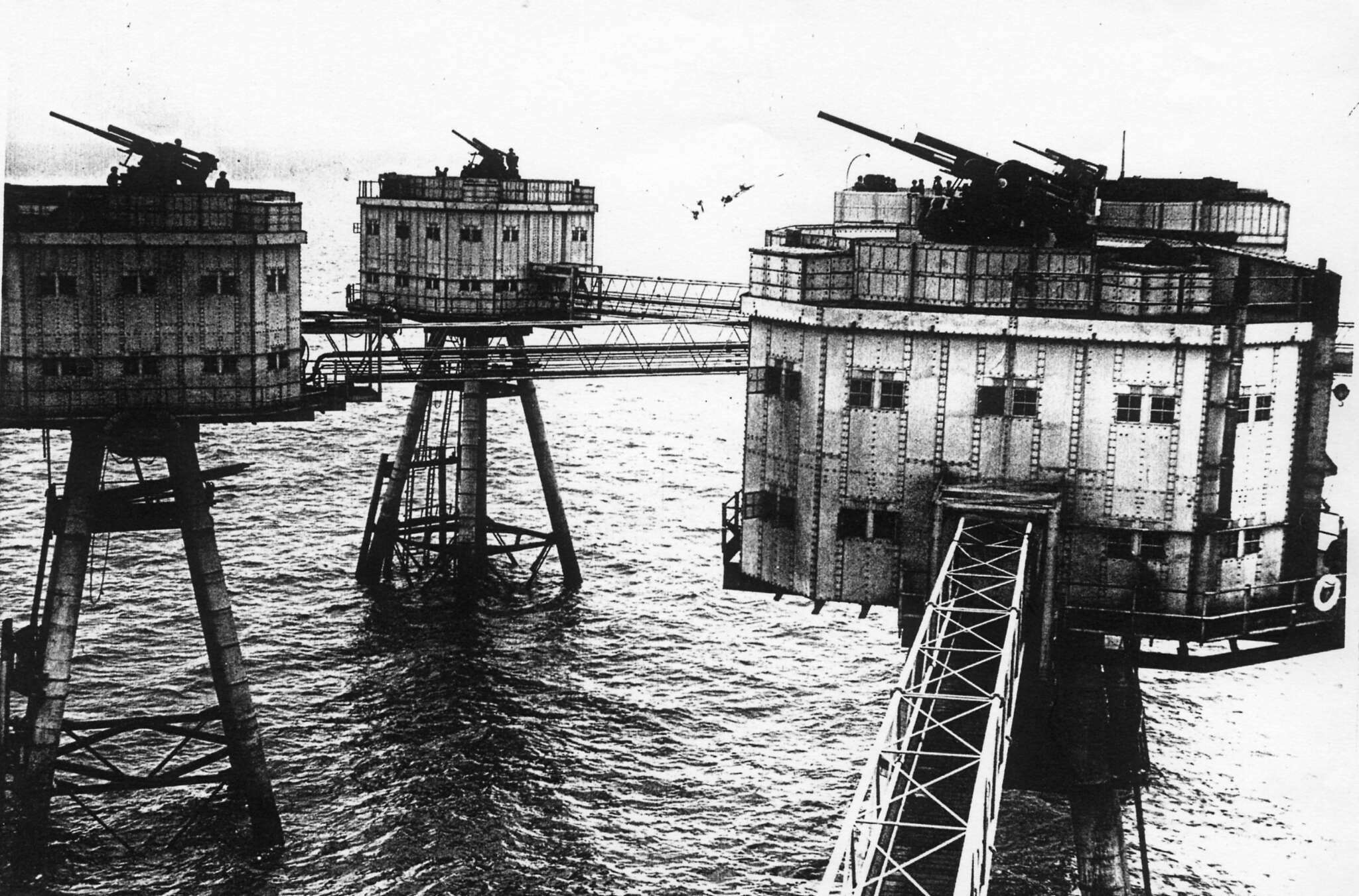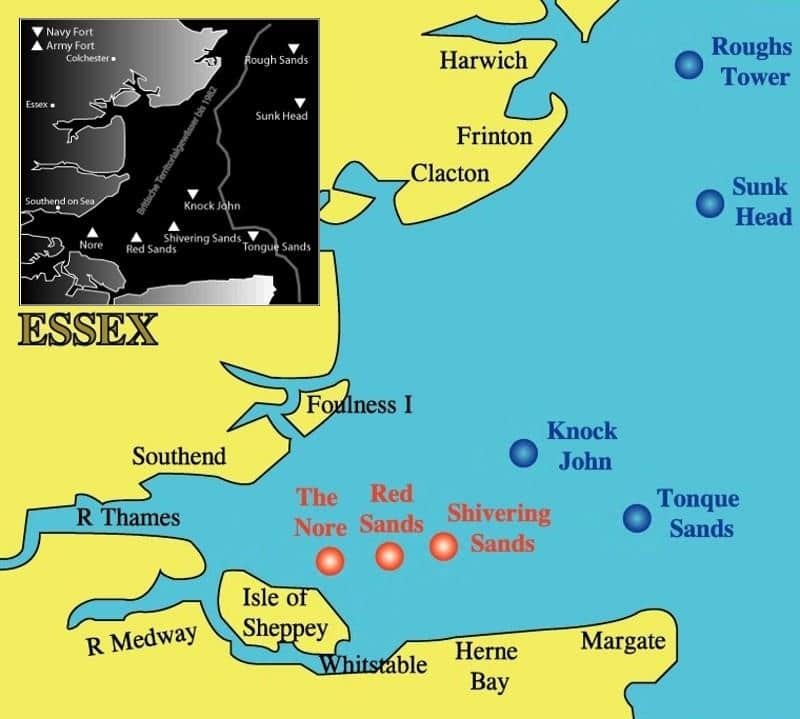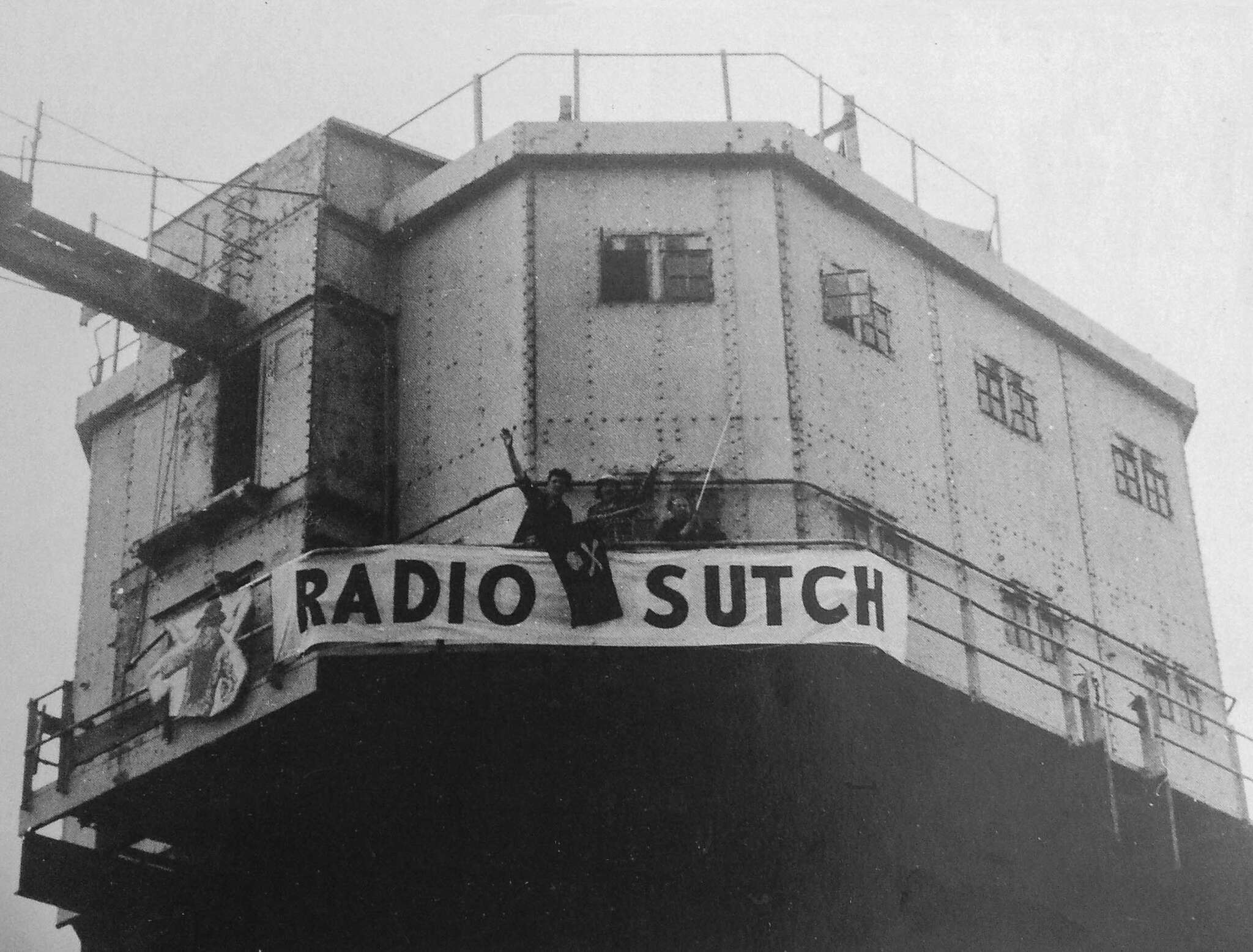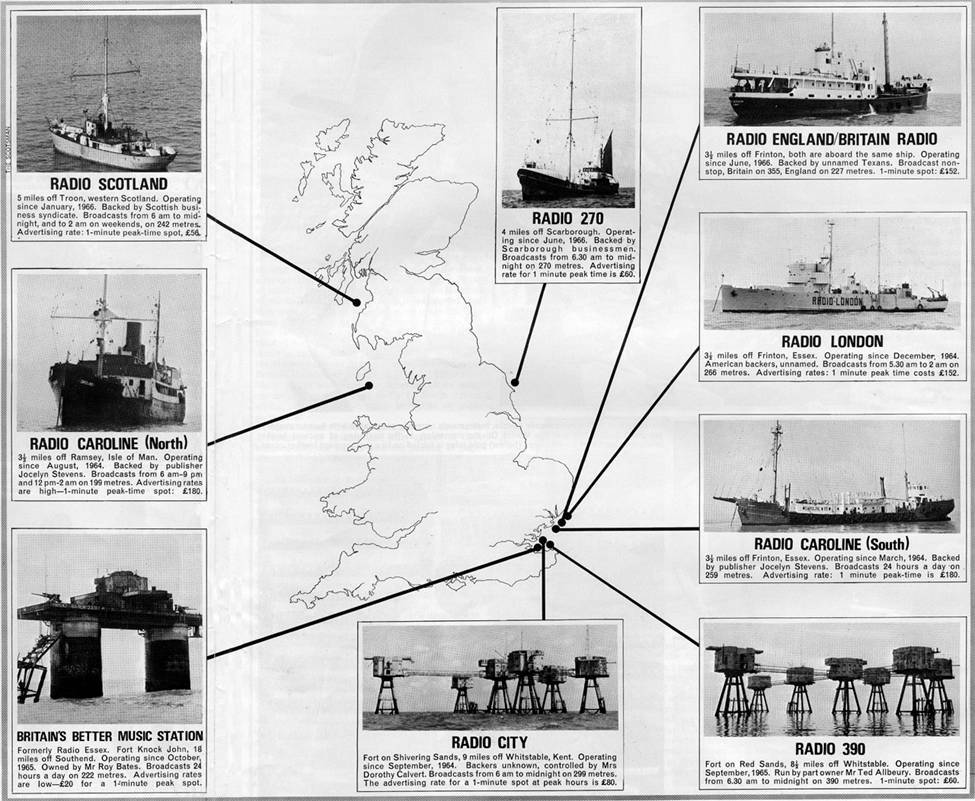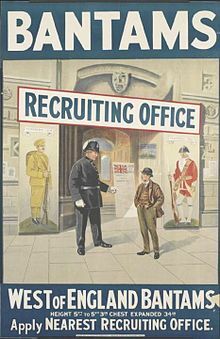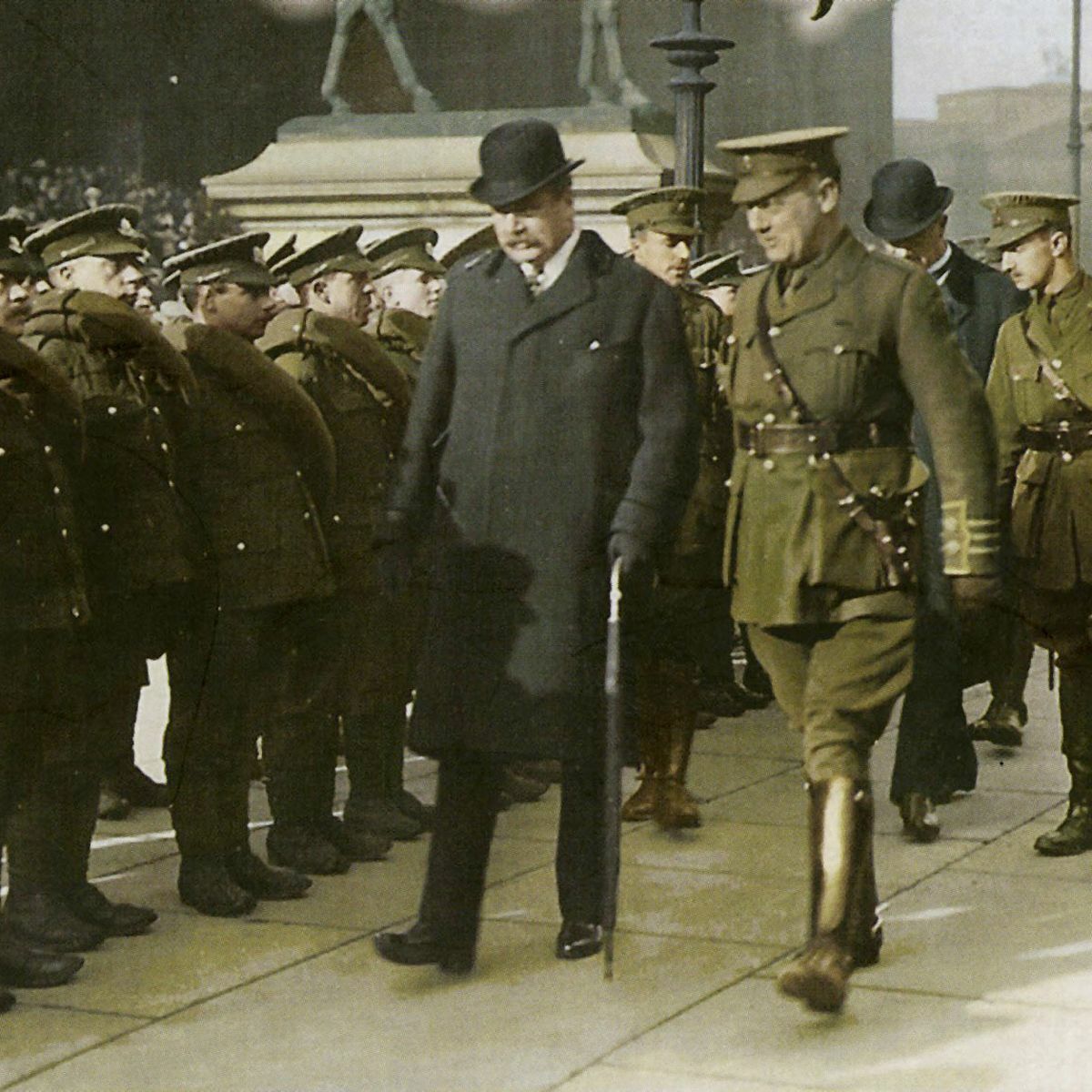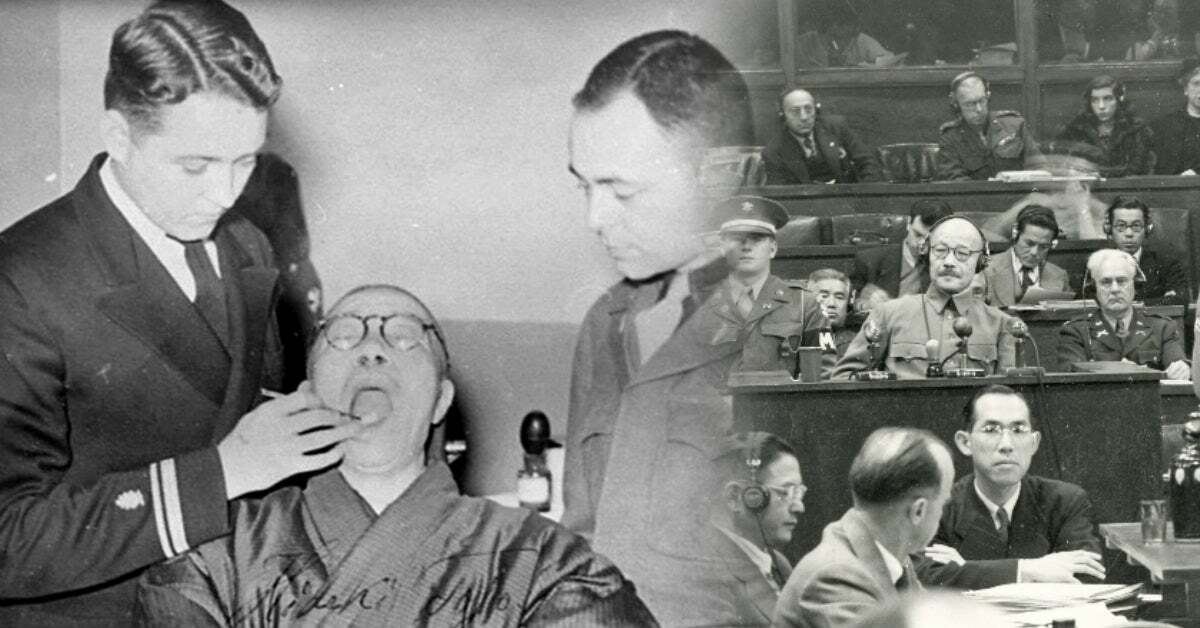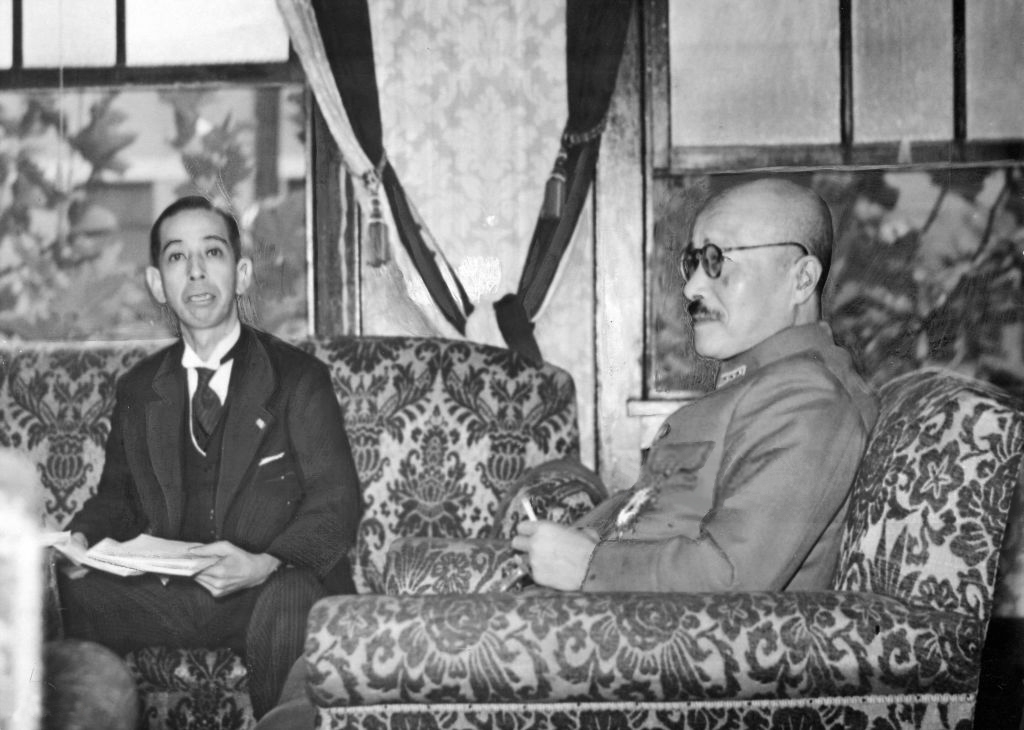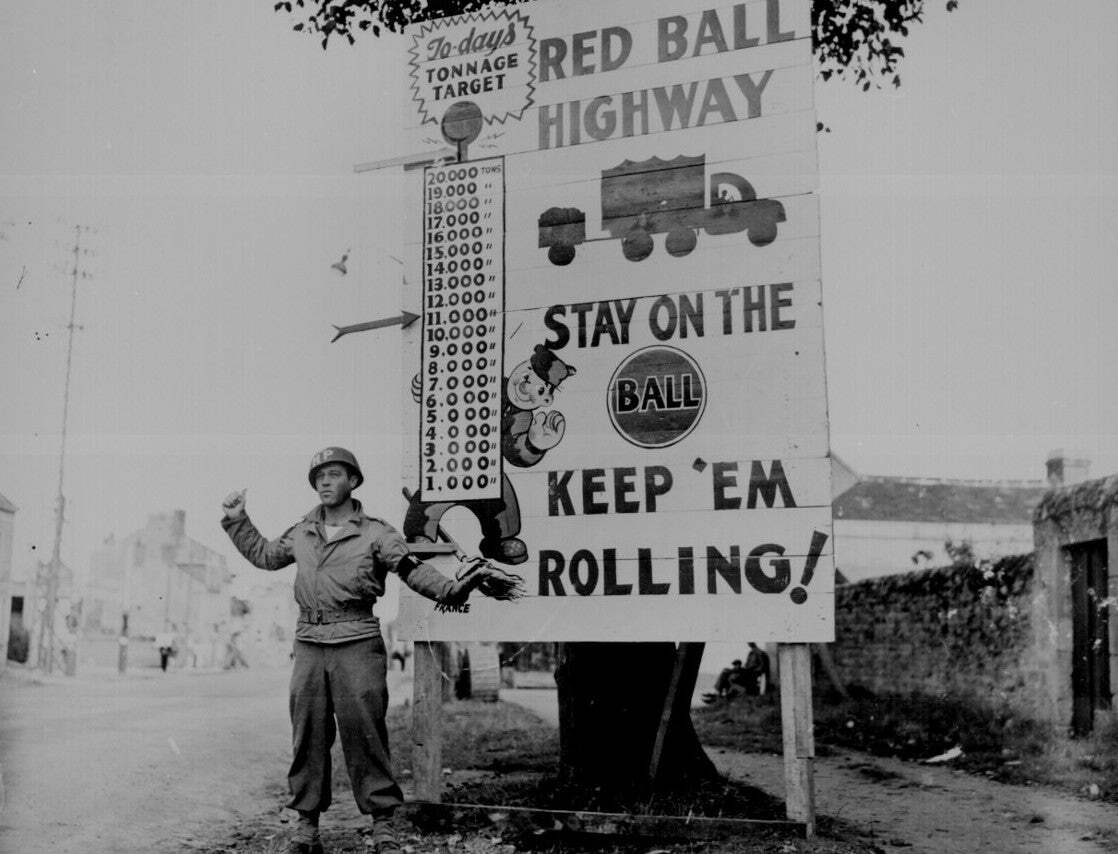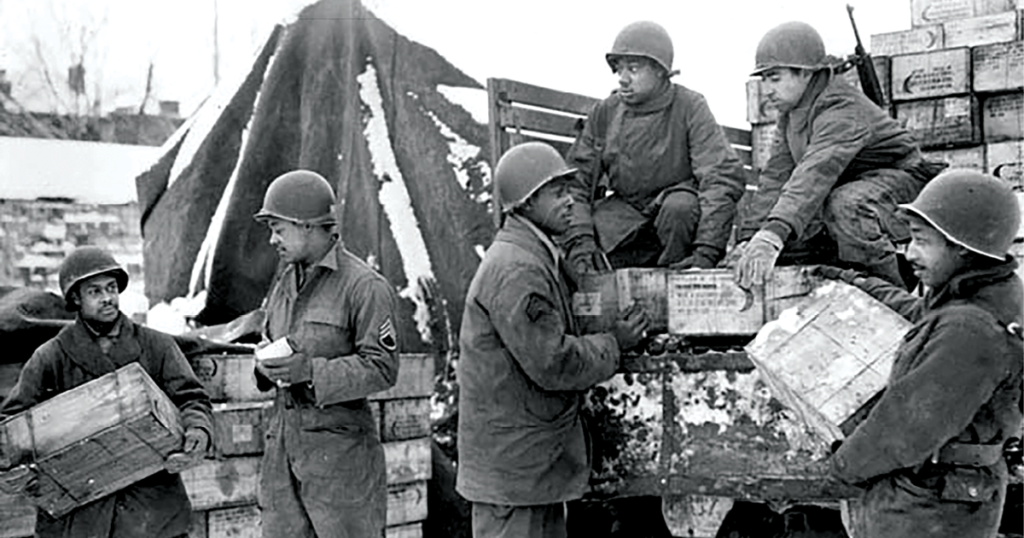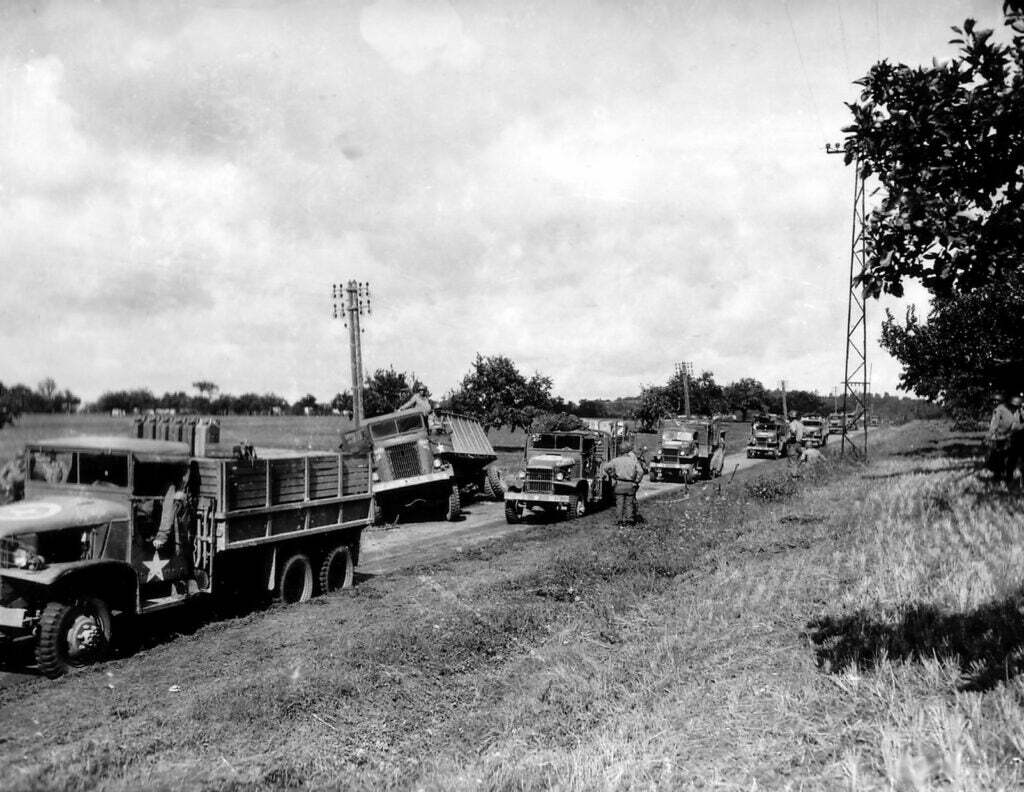- Posts: 1256
- Thank you received: 1781
Sidebar
Login Form
Little stories
- Maki
-

- Offline
Less
More
3 years 2 weeks ago - 3 years 2 weeks ago #55
by Maki
Replied by Maki on topic Little stories
The forts of Red Sand
War Time
At the outbreak of World War II, the Port of London was the busiest port in the world. As such, a large proportion of supplies to the UK entered by ships navigating the Thames. The German Navy quickly sought to put a stranglehold on this route, and to this end, utilized a new secret weapon – the magnetic influence mine. Whilst there were different variants of this mine, in simplistic terms, the mine was detonated by the presence of a large magnetic object – such as a steel hulled ship – passing in close proximity, without having to make physical contact.So successful was this that in the first few months of the war, over one hundred ships were sunk in the Thames Estuary alone. It was clear that urgent action was needed to stem these losses, and as most mines were laid by aircraft, ships were requisitioned and used as mobile anti aircraft units. However, this was not altogether successful, and a more satisfactory solution was needed.In the early years of the war, Guy Maunsell, a civil engineer, had produced plans for offshore defences. At the time his ideas were considered somewhat eccentric, but he was asked to submit plans for an offshore fort as an effective means of dealing with the laying of the mines. Plans were drawn up, and after some modification, approval was given for the manufacture and installation of 3 sets of Army Forts and 4 Navy Forts in the Thames Estuary.
As a result of German mining activity at the outbreak of war in September 1939, an urgent need arose to protect the waters of the Thames Estuary from small naval craft aircraft sowing magnetic mines. The initial answer was the placing of four Naval Sea Forts, each armed with two 3.7” Heavy AA guns and two 40mm Bofors guns, in the Estuary, located as follows: one 7 miles off Harwich, Essex, one 7 miles off Frinton on Sea, Essex, one 5 miles off Margate, Kent and one 12 miles off Herne Bay, Kent. Each of these Forts was manned by 120 men and three officers with crews rotating every six weeks to shore bases at Harwich for the Essex forts and Sheerness for the Kent Forts.
Each fort accommodated up to 265 men. Both Army and Navy forts successfully acquitted themselves during the war years. The Thames forts shot down 22 planes, 30 flying bombs, and were instrumental in the loss of one U-boat, which was scuttled after coming under fire from Tongue sands tower.
After the War
After the war the forts were placed on ‘care and maintenance’. However as the need for their continued use diminished, they were abandoned, and the guns removed from the Army forts, in 1956.The Nore fort was dismantled in 1959 being considered a hazard to shipping [two towers were lost following a collision in 1953] whilst one of the Shivering Sand towers was similarly lost in 1963.In 1964, Radio Caroline began broadcasting from a ship moored outside UK Territorial Waters.Other broadcasters followed with pop star Screaming Lord Sutch establishing Radio Sutch on the Shivering Sand Towers – much to the embarrassment of the Government. Radio Sutch became Radio City, whilst other forts were occupied to become Radio 390 [Redsand], Radio Essex [Knock John], and Tower Radio [Sunk Head]. The forts fell silent after a number of prosecutions in late 1966/67. It was accepted that all were within territorial waters, other than Roughs and Sunk Head. Sunk Head was destroyed by the Royal Engineers shortly after the Marine Broadcasting Offences Act became law, although Roughs has been occupied since 1967 to this day as the quasi independent Principality of Sealand.
Tongue Fort collapsed following a severe storm in 1996, although had been abandoned as long ago as 1947, after the reinforced pontoon base broke its back, and one of the legs developed a list.The remaining Army forts had their catwalks removed for safety reasons, and apart from some usage by the SAS as simulated oil rig assault training, all have remained largely unchanged, and are viewed from the coast as a curiosity on the horizon, by the casual observer.The maintenance crews were in occupation from May 1945 until April 1956 when it was decided to remove the guns and abandon the Forts. On March 1st 1953 a ship, the “Baalbeck” ran into the Nore group of towers in thick fog and knocked over the Bofors Tower and a gun tower killing four of the installed maintenance crew. The Army seemed more concerned with the loss of equipment, two Bofors guns, a 3.7” gun and a large amount of equipment and stores, than the personnel whose relatives were paid paltry sums as compensation for the loss of their loved ones. Subsequently in 1959 the Nore group of towers were removed and scrapped.
Another accident happened in 1963 when in June a ship the “Riberborg” crashed into the Shivering Sand Fort and demolished a gun tower. Fortunately, no one was on board at the time and there were no casualties. Thus, Shivering Sand Fort today consists of only six towers.This left the Redsand and Shivering Sand Forts remaining out of the three sets and following a period of occupation by the Radio Pirates from 1964 to 1967 the Forts were sanitized by the Admiralty who removed access ladders and catwalks to deny people access.
War Time
At the outbreak of World War II, the Port of London was the busiest port in the world. As such, a large proportion of supplies to the UK entered by ships navigating the Thames. The German Navy quickly sought to put a stranglehold on this route, and to this end, utilized a new secret weapon – the magnetic influence mine. Whilst there were different variants of this mine, in simplistic terms, the mine was detonated by the presence of a large magnetic object – such as a steel hulled ship – passing in close proximity, without having to make physical contact.So successful was this that in the first few months of the war, over one hundred ships were sunk in the Thames Estuary alone. It was clear that urgent action was needed to stem these losses, and as most mines were laid by aircraft, ships were requisitioned and used as mobile anti aircraft units. However, this was not altogether successful, and a more satisfactory solution was needed.In the early years of the war, Guy Maunsell, a civil engineer, had produced plans for offshore defences. At the time his ideas were considered somewhat eccentric, but he was asked to submit plans for an offshore fort as an effective means of dealing with the laying of the mines. Plans were drawn up, and after some modification, approval was given for the manufacture and installation of 3 sets of Army Forts and 4 Navy Forts in the Thames Estuary.
As a result of German mining activity at the outbreak of war in September 1939, an urgent need arose to protect the waters of the Thames Estuary from small naval craft aircraft sowing magnetic mines. The initial answer was the placing of four Naval Sea Forts, each armed with two 3.7” Heavy AA guns and two 40mm Bofors guns, in the Estuary, located as follows: one 7 miles off Harwich, Essex, one 7 miles off Frinton on Sea, Essex, one 5 miles off Margate, Kent and one 12 miles off Herne Bay, Kent. Each of these Forts was manned by 120 men and three officers with crews rotating every six weeks to shore bases at Harwich for the Essex forts and Sheerness for the Kent Forts.
Each fort accommodated up to 265 men. Both Army and Navy forts successfully acquitted themselves during the war years. The Thames forts shot down 22 planes, 30 flying bombs, and were instrumental in the loss of one U-boat, which was scuttled after coming under fire from Tongue sands tower.
After the War
After the war the forts were placed on ‘care and maintenance’. However as the need for their continued use diminished, they were abandoned, and the guns removed from the Army forts, in 1956.The Nore fort was dismantled in 1959 being considered a hazard to shipping [two towers were lost following a collision in 1953] whilst one of the Shivering Sand towers was similarly lost in 1963.In 1964, Radio Caroline began broadcasting from a ship moored outside UK Territorial Waters.Other broadcasters followed with pop star Screaming Lord Sutch establishing Radio Sutch on the Shivering Sand Towers – much to the embarrassment of the Government. Radio Sutch became Radio City, whilst other forts were occupied to become Radio 390 [Redsand], Radio Essex [Knock John], and Tower Radio [Sunk Head]. The forts fell silent after a number of prosecutions in late 1966/67. It was accepted that all were within territorial waters, other than Roughs and Sunk Head. Sunk Head was destroyed by the Royal Engineers shortly after the Marine Broadcasting Offences Act became law, although Roughs has been occupied since 1967 to this day as the quasi independent Principality of Sealand.
Tongue Fort collapsed following a severe storm in 1996, although had been abandoned as long ago as 1947, after the reinforced pontoon base broke its back, and one of the legs developed a list.The remaining Army forts had their catwalks removed for safety reasons, and apart from some usage by the SAS as simulated oil rig assault training, all have remained largely unchanged, and are viewed from the coast as a curiosity on the horizon, by the casual observer.The maintenance crews were in occupation from May 1945 until April 1956 when it was decided to remove the guns and abandon the Forts. On March 1st 1953 a ship, the “Baalbeck” ran into the Nore group of towers in thick fog and knocked over the Bofors Tower and a gun tower killing four of the installed maintenance crew. The Army seemed more concerned with the loss of equipment, two Bofors guns, a 3.7” gun and a large amount of equipment and stores, than the personnel whose relatives were paid paltry sums as compensation for the loss of their loved ones. Subsequently in 1959 the Nore group of towers were removed and scrapped.
Another accident happened in 1963 when in June a ship the “Riberborg” crashed into the Shivering Sand Fort and demolished a gun tower. Fortunately, no one was on board at the time and there were no casualties. Thus, Shivering Sand Fort today consists of only six towers.This left the Redsand and Shivering Sand Forts remaining out of the three sets and following a period of occupation by the Radio Pirates from 1964 to 1967 the Forts were sanitized by the Admiralty who removed access ladders and catwalks to deny people access.
Last edit: 3 years 2 weeks ago by snowman. Reason: Removed a duplicate paragraph and fixed layout display
The following user(s) said Thank You: snowman, p.jakub88
Please Log in or Create an account to join the conversation.
- Maki
-

- Offline
Less
More
- Posts: 1256
- Thank you received: 1781
3 years 4 days ago - 3 years 3 days ago #56
by Maki
Replied by Maki on topic Little stories
The Bantam Battalions of World War One As war broke out in 1914, millions of men rushed to volunteer. But some of those keen young men, fit and ready to fight, would be turned away – for being too short.At the outbreak of
World War One
, the height requirement for recruits to the British Army was 5ft 3 inches (160cm), with a chest measurement of at least 34 inches (86.36cm).It soon became apparent that this rule excluded many men, especially those from industrial and coal mining areas, who were otherwise perfectly fit to serve.Not only were these men physically fit, many were desperate to ‘do their bit’ and join up. Having been refused at every recruiting office he tried because of his height, one miner became so incensed that he declared he would fight any man to prove that he was as good a fighter as any. He reputedly fought off six men before he was dragged away. This happened in Birkenhead,
Cheshire
and when the local MP, Alfred Bigland got to hear of it, he wrote to the Secretary of State for War, Lord Kitchener.
Bigland criticised what he saw as the needless rejection of fit, healthy men and asked Kitchener for permission to form an undersized fighting unit. Whilst the War Office approved of the idea, they declined to fund it.So Bigland decided to raise his own company and the 15th Battalion, 1st Birkenhead, The Cheshire Regiment was formed, composed of healthy men between 4 ft 10ins (140cm) and 5ft 3ins (160cm) tall. They were named Bantams after the small aggressive fowl which became their battalion emblem.
When the news about the Bantams spread, men came from all over the country to Birkenhead to enlist. By November 1914 there were 3,000 new Bantam recruits and a second battalion was formed.The local newspaper, The Birkenhead News, took the men to heart and treated them to enamel badges engraved with ‘BBB’ for ‘Bigland’s Birkenhead Bantams’.
The idea quickly spread to other parts of the country and more Bantam battalions were formed in the UK and Canada. They soon acquired a reputation for fierce fighting and bravery, as expressed in the following contemporary anonymous poem:
After frequent bar brawls in Glasgow, the cantankerous 18th Battalion of the Highland Light Infantry, a Bantam battalion, gained such a fierce reputation that they were nicknamed the Devil Dwarfs by the locals.
The Bantam battalions were not however without their problems. It was easier to enlist in a Bantam unit if you were underage. Also, as the war progressed the Bantam battalions began to lose some of their identity. As former miners, many of the men were reassigned to tunneling companies and because of their smaller size, some were also transferred to the fledgling tank regiments . They suffered heavy casualties during the Battle of Bourlon in 1917 and those lost were replaced by taller men. What with these events and the introduction of conscription , by the end of the war the Bantam battalions appeared largely indistinguishable from other British units.
Bigland criticised what he saw as the needless rejection of fit, healthy men and asked Kitchener for permission to form an undersized fighting unit. Whilst the War Office approved of the idea, they declined to fund it.So Bigland decided to raise his own company and the 15th Battalion, 1st Birkenhead, The Cheshire Regiment was formed, composed of healthy men between 4 ft 10ins (140cm) and 5ft 3ins (160cm) tall. They were named Bantams after the small aggressive fowl which became their battalion emblem.
When the news about the Bantams spread, men came from all over the country to Birkenhead to enlist. By November 1914 there were 3,000 new Bantam recruits and a second battalion was formed.The local newspaper, The Birkenhead News, took the men to heart and treated them to enamel badges engraved with ‘BBB’ for ‘Bigland’s Birkenhead Bantams’.
The idea quickly spread to other parts of the country and more Bantam battalions were formed in the UK and Canada. They soon acquired a reputation for fierce fighting and bravery, as expressed in the following contemporary anonymous poem:
Each one a pocket Hercules
five feet and a bit,
a kind of Bovril essence
of six feet British grit.
five feet and a bit,
a kind of Bovril essence
of six feet British grit.
After frequent bar brawls in Glasgow, the cantankerous 18th Battalion of the Highland Light Infantry, a Bantam battalion, gained such a fierce reputation that they were nicknamed the Devil Dwarfs by the locals.
The Bantam battalions were not however without their problems. It was easier to enlist in a Bantam unit if you were underage. Also, as the war progressed the Bantam battalions began to lose some of their identity. As former miners, many of the men were reassigned to tunneling companies and because of their smaller size, some were also transferred to the fledgling tank regiments . They suffered heavy casualties during the Battle of Bourlon in 1917 and those lost were replaced by taller men. What with these events and the introduction of conscription , by the end of the war the Bantam battalions appeared largely indistinguishable from other British units.
Last edit: 3 years 3 days ago by snowman. Reason: Minor display corrections...
The following user(s) said Thank You: snowman
Please Log in or Create an account to join the conversation.
- Maki
-

- Offline
Less
More
- Posts: 1256
- Thank you received: 1781
2 years 11 months ago #57
by Maki
Replied by Maki on topic Little stories
A sailor snuck “Remember Pearl Harbor” onto Tojo’s dentures before his war crime trial
Japanese Prime Minister Gen. Hideki Tojo took office just a month before the Pearl Harbor attacks, but had served as the Army minister for over a year before that and helped to draft the plan — from the attack at Pearl Harbor through the hopeful Japanese victory — for war with the western powers.
After Japan’s surrender, Tojo knew that he would be arrested and executed. He attempted suicide on Sep. 11, 1945 as American soldiers moved into position around his house but he survived.
Tōjō meets with Minister of Munitions Nobusuke Kishi who later became a prime minister in postwar Japan.
As Tojo awaited trial in 1946, the Navy sent Lt. j.g. Dr. George Foster, an oral surgeon, to examine the prime minister’s heavily damaged teeth. The surgeon removed all but seven of Tojo’s and then consulted with a Navy dental prosthetics officer, Lt. j.g. Dr. Jack Mallory.Mallory recommended complete upper and lower dentures, but Tojo refused because he thought it would be a waste of effort to make both dentures for someone about to be executed. Instead, he asked for only an upper set of dentures so he could speak well at his trial.Mallory and his friends devised a prank. They decided to engrave "Remember Pearl Harbor"on the back of the general's dentures. Knowing that he would get in trouble if caught, Mallory opted to engrave the message in Morse code instead of standard letters.Only Foster and Mallory knew that Mallory had gone through with the joke.
You could see it clearly when it was dried, but 99 percent of the time you couldn’t tell,” Mallory told the Chico News and review in 2002.The secret got out though. Mallory bragged about the prank to two new members of the dental team and one of them told his parents in a letter. The parents passed the story on and it was broadcast on a Texas radio show.
When word began to circulate through Tokyo, Mallory went to his superior and confessed.
Army Maj. William Hill told the young dentist, “That’s funny as hell but we could get our asses kicked for doing it.”Mallory and Foster knew a guard at the prison and got access to the prison on Feb. 14, 1947, to grind the message off of the dentures. Their mission was successful.An Army colonel found out about the story the next morning and summoned the dentists to his office, but both men denied the rumors.Tojo later complained that the dentures fit differently after they were adjusted that February night, but there are no signs that he ever knew about the trick the dentists played on him. He was sentenced to death during the trial and executed in 1948.
Japanese Prime Minister Gen. Hideki Tojo took office just a month before the Pearl Harbor attacks, but had served as the Army minister for over a year before that and helped to draft the plan — from the attack at Pearl Harbor through the hopeful Japanese victory — for war with the western powers.
After Japan’s surrender, Tojo knew that he would be arrested and executed. He attempted suicide on Sep. 11, 1945 as American soldiers moved into position around his house but he survived.
Tōjō meets with Minister of Munitions Nobusuke Kishi who later became a prime minister in postwar Japan.
As Tojo awaited trial in 1946, the Navy sent Lt. j.g. Dr. George Foster, an oral surgeon, to examine the prime minister’s heavily damaged teeth. The surgeon removed all but seven of Tojo’s and then consulted with a Navy dental prosthetics officer, Lt. j.g. Dr. Jack Mallory.Mallory recommended complete upper and lower dentures, but Tojo refused because he thought it would be a waste of effort to make both dentures for someone about to be executed. Instead, he asked for only an upper set of dentures so he could speak well at his trial.Mallory and his friends devised a prank. They decided to engrave "Remember Pearl Harbor"on the back of the general's dentures. Knowing that he would get in trouble if caught, Mallory opted to engrave the message in Morse code instead of standard letters.Only Foster and Mallory knew that Mallory had gone through with the joke.
You could see it clearly when it was dried, but 99 percent of the time you couldn’t tell,” Mallory told the Chico News and review in 2002.The secret got out though. Mallory bragged about the prank to two new members of the dental team and one of them told his parents in a letter. The parents passed the story on and it was broadcast on a Texas radio show.
When word began to circulate through Tokyo, Mallory went to his superior and confessed.
Army Maj. William Hill told the young dentist, “That’s funny as hell but we could get our asses kicked for doing it.”Mallory and Foster knew a guard at the prison and got access to the prison on Feb. 14, 1947, to grind the message off of the dentures. Their mission was successful.An Army colonel found out about the story the next morning and summoned the dentists to his office, but both men denied the rumors.Tojo later complained that the dentures fit differently after they were adjusted that February night, but there are no signs that he ever knew about the trick the dentists played on him. He was sentenced to death during the trial and executed in 1948.
The following user(s) said Thank You: snowman, p.jakub88
Please Log in or Create an account to join the conversation.
- Florente
- Offline
Less
More
- Posts: 31
- Thank you received: 37
2 years 11 months ago #58
by Florente
Replied by Florente on topic Little stories
Story of the bomber in Libya 3
https://en.m.wikipedia.org/wiki/Lady_Be_Good_(aircraft)
https://en.m.wikipedia.org/wiki/Lady_Be_Good_(aircraft)
The following user(s) said Thank You: snowman, Damni
Please Log in or Create an account to join the conversation.
- snowman
-
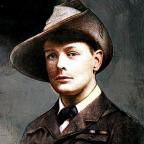
- Offline
- Your most dear friend.
2 years 11 months ago #59
by snowman
"Straight and narrow is the path."
Replied by snowman on topic Little stories
Sasha also told the story
here

"Straight and narrow is the path."
The following user(s) said Thank You: Damni, Florente
Please Log in or Create an account to join the conversation.
- Maki
-

- Offline
Less
More
- Posts: 1256
- Thank you received: 1781
2 years 10 months ago #60
by Maki
Replied by Maki on topic Little stories
‘The Red Ball Express’ kept the Allies supplied and armed after the D-Day breakout
After storming the beaches of Normandy and fighting through the hedgerows of the French countryside, the Allied forces invading German-occupied Europe came across one problem they hadn’t anticipated: outrunning their own supply lines. By July 1944, the Allied advance nearly ground to a halt. Every operation was decided by one major factor, which was how much supply it required versus how much could be delivered. It would be almost three months before French railways could be repaired and portable gas pipelines could be installed. To move the necessary supplies and keep the pressure on the German army, Allied war planners created a massive, truck-based supply convoy run primarily by Black soldiers. It became known as the “Red Ball Express.”The Allies need a continuous supply of necessary fuel, ammunition, ordnance and food to keep running to the front. After breaking out of the Normandy area, the infrastructure the Allies damaged to hamper the German response needed repair to be used for the German defeat.
Soldiers from the 4185th Quartermaster Service Company (left to right), Pvt. Harold Hendricks, Staff Sgt. Carl Haines, Sgt. Theodore Cutright, Pvt. Lawrence Buckhalter, Pfc. Horace Deahl, and Pvt. David N. Hatcher, load trucks with rations bound for frontline troops September 1944 in Liege, Belgium. There had to be a way to move 750 tons of supplies from the port of Antwerp to multiple locations across the front every day. Just one armored division alone required 350 tons of gasoline. After brainstorming for 36 hours straight, planners came up with a solution: a convoy of thousands and thousands of trucks, constantly streaming to and from the front lines. No truck could travel alone, they had to travel in a convoy of at least five total trucks and each was marked with a number indicating its position in the line of trucks. To mitigate the risks of high speed driving or of a truck pile up in an accident, trucks were ordered to drive just 35 miles per hour and maintain a specific clear distance from each other. The order to drive slower was rarely followed, many drove at twice that speed. When they implemented the plan, there weren’t enough trucks and there weren’t enough drivers. The Army began vulturing trucks from units who weren’t using them and began taking people with non-combat functions and training them to be truck drivers. The vast majority of these men were Black soldiers.
Without these soldiers at the wheel, World War II in Europe might have dragged on for another full year. Gen. Dwight D. Eisenhower saw the Red Ball Express as the most critical lifeline to the advancing armies, just as important as the combat units themselves. Of course, these early trucks got stuck in traffic, both civilian and military. So the Allies created two priority roads just for the supply trucks, which became known as the Red Ball Line, named for the red spots marking the trucks and the routes that were closed to civilians.At its height, the Red Ball Express was operating almost 6,000 trucks per day to move 12,500 tons of various supplies, fuel, and ammunition. Since the German Luftwaffe was almost nonexistent by this point in the war, the biggest problems facing the convoys were maintenance of the trucks and the overworked drivers.Eventually, the rail lines were repaired and the Red Ball Express was no longer necessary. After more than 80 days of continuous operation, the convoy drivers had delivered more than 400,000 tons of supplies to the Allies in combat.
Soldiers from the 4185th Quartermaster Service Company (left to right), Pvt. Harold Hendricks, Staff Sgt. Carl Haines, Sgt. Theodore Cutright, Pvt. Lawrence Buckhalter, Pfc. Horace Deahl, and Pvt. David N. Hatcher, load trucks with rations bound for frontline troops September 1944 in Liege, Belgium. There had to be a way to move 750 tons of supplies from the port of Antwerp to multiple locations across the front every day. Just one armored division alone required 350 tons of gasoline. After brainstorming for 36 hours straight, planners came up with a solution: a convoy of thousands and thousands of trucks, constantly streaming to and from the front lines. No truck could travel alone, they had to travel in a convoy of at least five total trucks and each was marked with a number indicating its position in the line of trucks. To mitigate the risks of high speed driving or of a truck pile up in an accident, trucks were ordered to drive just 35 miles per hour and maintain a specific clear distance from each other. The order to drive slower was rarely followed, many drove at twice that speed. When they implemented the plan, there weren’t enough trucks and there weren’t enough drivers. The Army began vulturing trucks from units who weren’t using them and began taking people with non-combat functions and training them to be truck drivers. The vast majority of these men were Black soldiers.
Without these soldiers at the wheel, World War II in Europe might have dragged on for another full year. Gen. Dwight D. Eisenhower saw the Red Ball Express as the most critical lifeline to the advancing armies, just as important as the combat units themselves. Of course, these early trucks got stuck in traffic, both civilian and military. So the Allies created two priority roads just for the supply trucks, which became known as the Red Ball Line, named for the red spots marking the trucks and the routes that were closed to civilians.At its height, the Red Ball Express was operating almost 6,000 trucks per day to move 12,500 tons of various supplies, fuel, and ammunition. Since the German Luftwaffe was almost nonexistent by this point in the war, the biggest problems facing the convoys were maintenance of the trucks and the overworked drivers.Eventually, the rail lines were repaired and the Red Ball Express was no longer necessary. After more than 80 days of continuous operation, the convoy drivers had delivered more than 400,000 tons of supplies to the Allies in combat.
The following user(s) said Thank You: snowman, WANGER
Please Log in or Create an account to join the conversation.
- Lukasz birthday is in 10 days (41)

